How to Grow Spinach |
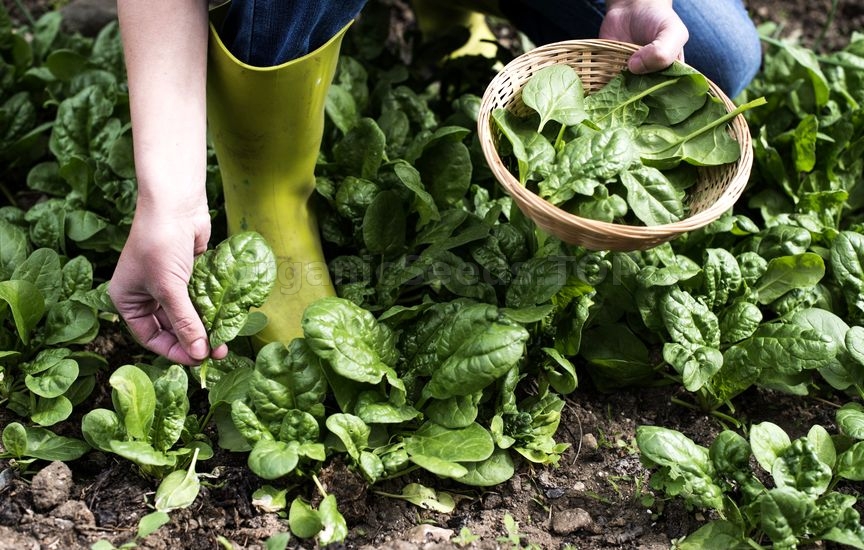 After a long winter in the Northeast, spinach (Spinacia oleracea) is a welcome site. It’s one of the first greens to appear in spring and I’ve actually overwintered it from a fall planting to have it available as early as April in my Vermont garden. Not only is spinach a great green for salads, it’s versatile too. You can steam it, toss it in stews and soups, and simply saute it with garlic and olive oil. Not only will with cool weather loving veggie satisfy your cravings for fresh greens in early spring, it’s loaded with nutrients such as vitamin A, iron, and calcium. When to Plant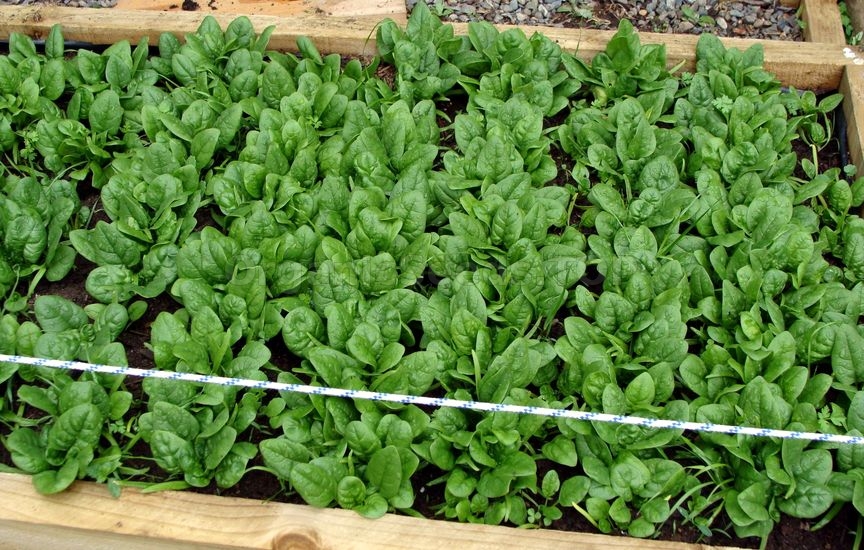 Spinach needs cool temperatures to grow and mature. It’s best planted as a spring or fall crop. Plant in spring 6 weeks before your last frost date, usually April. Spinach seeds can germinate with temperatures around 40F, so once the ground is dried out, start seeding.
Continue planting small patches every 2 weeks until late spring to insure a continuous harvest. Plant again in late summer for a fall crop. I like to plant in late August in a cold frame and let the spinach overwinter in this protected space for an early spring harvest. Where to Plant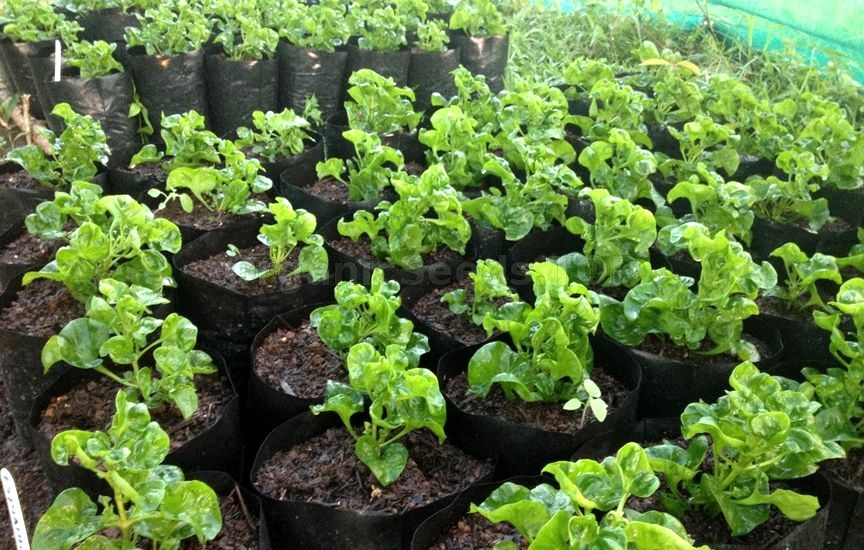 Spinach will grow with as little as a few hours of full sun, but forms the biggest leaves and plants in full sun. Since you’re planting so early, plant spinach on a bed raised 8 inches tall and 3 feet wide. The soil will dry out and warm up faster on the raised bed, allowing for faster germination and growth.
How to Plant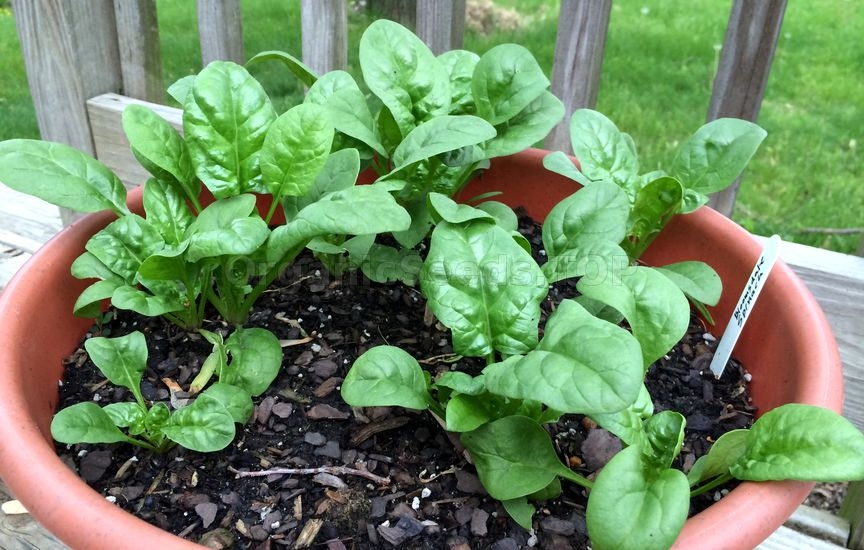 Amend the raised bed with compost before planting. Soak seeds overnight in warm water to start germination. The next day plant seeds 1 inch apart in rows spaced 12 inches apart. You can also broadcast seeds on top of the bed.
Care and Maintenance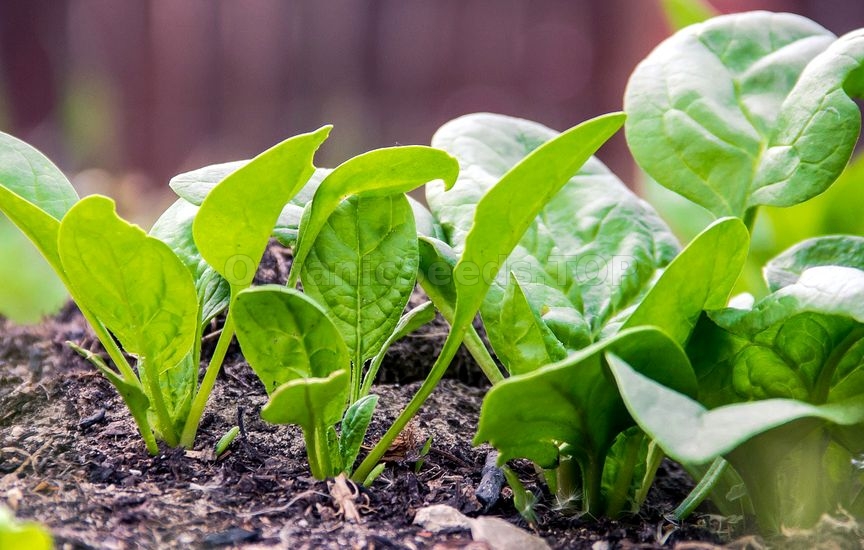 Thin spinach seedlings to 6 inches apart when they’re 3 inches tall. Thinning helps the plants grow large and reduces the amount of diseases such as rust on the plants, by giving the plant more room to grow. Use the thinned seedlings in salads. Keep the soil cool and moist by watering regularly and mulching with a layer of an organic mulch, such as straw or untreated grass clippings, after thinning.
If the young leaves are pale green or yellow colored, spray the plants with fish emulsion fertilizer. This quick reacting organic fertilizer will add nitrogen to help green up the leaves. 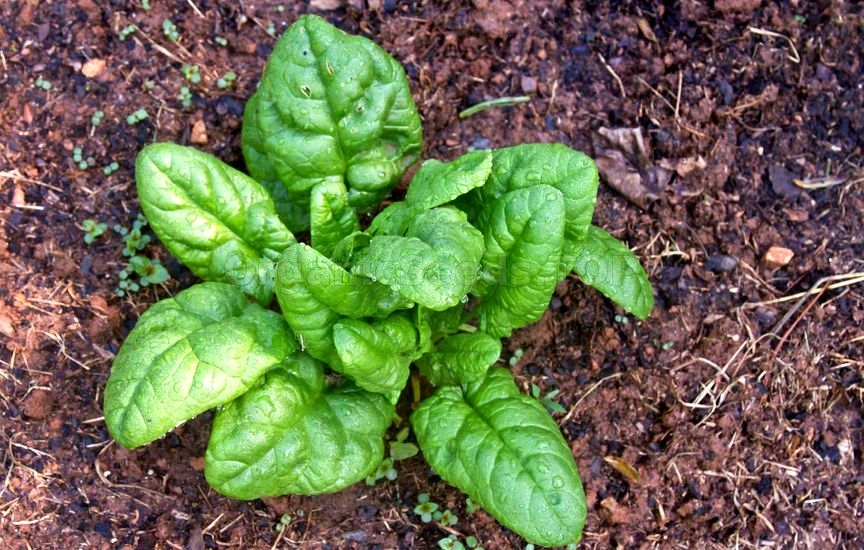 Watch for aphids, leaf miners, and flea beetles on your spinach leaves. Wash off aphids with an insecticidal soap spray and cover plants with a floating row cover to prevent flea beetle and leaf miner damage. If growing to overwinter, cover the fall seeded spinach crop in November with a floating row cover and a 4- to 6-inch thick layer of straw. Check in early spring for signs of growth and remove the straw. Harvest Start harvesting outer spinach leaves when there are 6 leaves on the plant — about 30 days after seeding. If you don’t harvest the outer leaves, pull up and harvest full heads about 2 weeks later. Continue harvesting individual leaves until the weather warms and a seed stalk forms on the plants (bolts). Then pull all plants and compost them. You may need:«Boss» - Organic Spinach Seeds«Longstanding» - Organic Spinach SeedsOrganic Broad Leaf Sorrel Seeds (Rumex Acetosa)«Matador» - Organic Spinach Seeds«Winter Giant» - Organic Spinach Seeds |
|
|
